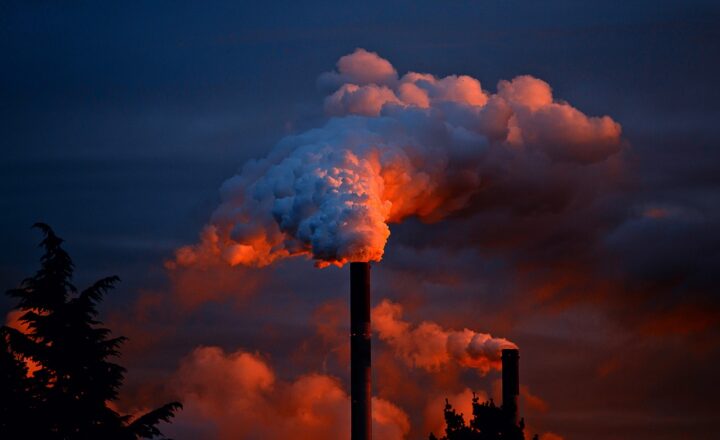How Marine Pollution Affects Sea Creature Reproduction and Health
November 15, 2024

Marine pollution is one of the most pressing environmental issues of our time, impacting not only the health of marine ecosystems but also the reproduction and overall health of sea creatures. As the oceans cover more than 70% of the Earth’s surface, they play a critical role in supporting life, regulating climate, and providing food and resources for millions of people worldwide. However, the introduction of harmful substances into marine environments threatens this balance, leading to alarming consequences for marine wildlife.
### 1. Understanding Marine Pollution
Marine pollution typically refers to the introduction of toxic substances, such as plastics, heavy metals, and chemicals, into the ocean. These pollutants can come from various sources, including industrial discharge, agricultural runoff, urban sewage, and plastic waste. Once in the ocean, pollutants disperse, interact with marine life, and accumulate in the food web, leading to widespread ecological damage.
#### Types of Marine Pollutants:
- Plastic Waste: Over 300 million tons of plastic are produced globally each year, with a significant portion ending up in oceans. Marine animals often ingest plastic or become entangled in it, leading to injury, death, and reproductive issues.
- Heavy Metals: Metals such as mercury, lead, and cadmium can accumulate in marine organisms through contaminated water and sediment, resulting in toxic effects on reproduction and growth.
- Nutrient Pollution: Excess nutrients from agricultural runoff can lead to algal blooms that deplete oxygen levels and produce toxins harmful to marine life, ultimately affecting breeding and survival rates.
### 2. The Impact of Pollution on Reproductive Health
Pollution has far-reaching consequences on the reproductive health of marine organisms. Many species, from fish to marine mammals, are negatively affected by the presence of toxins in their environment. Here are some key areas where pollution impacts reproduction:
#### Hormonal Disruption:
Pollutants such as endocrine-disrupting chemicals (EDCs) can interfere with the hormonal systems of marine animals. EDCs can mimic or block hormones, leading to reproductive anomalies, decreased fertility, and altered reproductive behaviors. This disruption can result in problems such as:
- Decreased Sperm Quality: In male fish and marine mammals, exposure to EDCs can lower sperm counts and motility, leading to lower success rates in reproduction.
- Abnormal Egg Development: For females, environmental toxins can lead to the production of eggs with developmental issues, resulting in higher rates of embryo mortality and lower hatching success.
#### Developmental Impacts:
The early life stages of marine creatures are particularly vulnerable to the effects of pollutants. Larval and juvenile stages can be affected by decreased nutrition and exposure to toxic substances, leading to:
- Increased Mortality Rates: Many species face higher mortality rates during their early stages due to exposure to polluted environments.
- Impaired Growth: Pollutants can stunt growth and development, reducing the likelihood of successful maturation and future reproduction.
### 3. Effects on Dolphin and Whale Populations
Marine mammals, particularly dolphins and whales, have been severely impacted by pollution. These apex predators rely on a healthy marine ecosystem for their survival and reproduction. Here’s how pollution affects them:
#### Bioaccumulation:
As higher trophic level organisms, dolphins and whales often accumulate significant amounts of toxins in their bodies over time. This bioaccumulation affects their:
- Reproductive Success: High levels of heavy metals and other contaminants in marine mammals can lead to reproductive failures and stillbirths.
- Impaired Maternal Care: Affected females may struggle to care for their calves, leading to lower survivorship among offspring.
#### Behavioral Changes:
Pollution can lead to behavioral changes in marine mammals that affect mating and social structures. Disruption of communication signals and stress responses can lead to:
- Reduced Mating Opportunities: Stress and environmental disturbances can lead to fewer mating interactions, impacting population growth.
- Altered Migration Patterns: Changes in food availability and habitat quality may force whales and dolphins to migrate differently, affecting mating and birthing behaviors.
### 4. The Cycle of Life: Polluted Food Sources
The food chain within marine ecosystems is heavily impacted by pollution. As smaller organisms, like plankton, absorb toxins, these pollutants move up the food chain, affecting larger predators:
#### Trophic Transfer:
Fish that consume contaminated prey accumulate higher levels of toxins in their bodies. This can lead to reproductive issues such as:
- Genetic Mutations: Toxins can induce genetic changes that adversely affect future generations, influencing populations long-term.
- Altered Mating Behaviors: Changes in physical appearance or hormonal levels can affect attraction and mating rituals, ultimately reducing reproductive success.
### 5. Action Steps and Solutions
Addressing marine pollution requires a multi-faceted approach to mitigate its impact on marine life. Here are some actionable solutions:
- Policy and Regulation: Enforcing stricter regulations on industrial discharges and plastic use can significantly reduce pollution entering the oceans.
- Public Awareness and Education: Educating communities about proper waste disposal, recycling, and pollution prevention can induce behavioral change at the grassroots level.
- Restoration Projects: Initiating habitat restoration efforts can help rejuvenate impacted marine ecosystems and aid in the recovery of polluted areas.
- Research and Monitoring: Further research into the effects of pollution on marine life will help to strengthen conservation efforts and guide effective management practices.
### Conclusion
The effects of marine pollution on the reproduction and health of sea creatures highlight the urgent need for collective action. As stewards of the ocean, we must recognize that the choices we make today will shape the future of our marine ecosystems and the creatures that inhabit them. By understanding the risks associated with pollution and advocating for sustainable practices, we can work towards a healthier ocean and thriving marine life.
Together, we can strive for a future where our oceans remain pristine and filled with robust marine biodiversity, benefiting both the environment and humanity.
—







